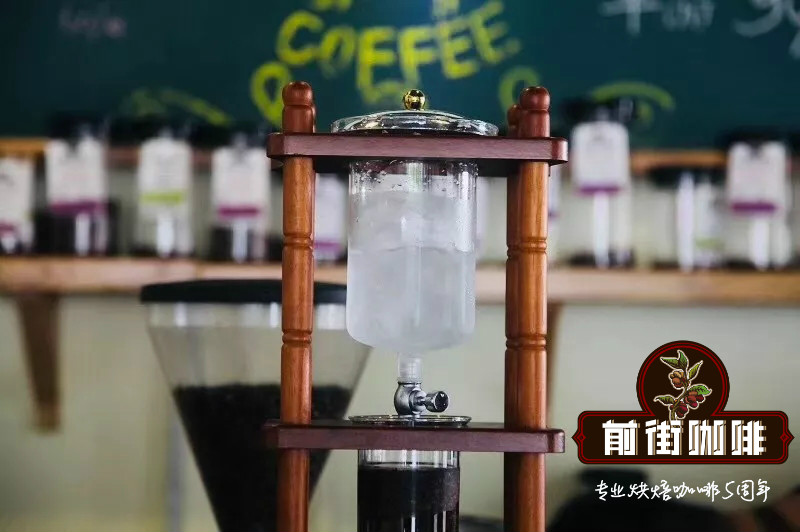What kind of Latin American coffee do you have? Introduction to Starbucks Honduran Coffee Wash Makala Coffee

Professional coffee knowledge exchange more coffee bean information please follow the coffee workshop (Wechat official account cafe_style)
Latin America
Fresh and lively acidity with aromas of nuts, cocoa and soft spices.
Honduras
Honduras is a very beautiful country and occupies an important position in the history of Central America. Until around 900 AD, the ancient city of Copan Maya was regarded as the capital of Central America. Like many other Mayan cities, it mysteriously disappeared. However, Honduras is also one of the poorest countries in the Western Hemisphere and one of the worst affected by Hurricane Mitch in 1997.
Coffee growing areas in Latin America include Mexico and countries in Central and South America. This is an extremely important area for Starbucks. In 2009, Latin America accounted for more than half of our total coffee purchases. Coffee from this area is often referred to as "washed" coffee and is generally processed by fermentation to form a flavor.
Washing method
Water washing helps to improve the acidity or aroma of coffee and gives it a soft and refreshing aftertaste.
As the name implies, this method mainly depends on the use of water. This is especially true when the mucus layer is dissolved in a large water tank during fermentation. As a result, cleaner coffee beans and cup flavors with higher acidity can be obtained. In fact fermentation strengthens the acidity of coffee which is why Latin American coffee (which is often processed by washing) is often famous for its significant acidity.
① collection: coffee berries will be transferred to a wet workshop where they are measured and placed in the collection tank.
② beating (de-fleshed): after the berries have been washed, they are fed into a pulp-removing machine. By rubbing, the pulp on the coffee beans can be fundamentally removed, which is waiting to be fermented, and the pulp will be collected for composting.
③ fermentation: after the pulp is removed, the coffee beans will be sent to the fermentor and fermented for 18-36 hours. In the early stages of fermentation, the enzyme breaks down the mucus so that the pulp can be removed. After fermentation, the coffee beans remove all residual mucus through the cleaning channel.
④ drying: coffee beans are dried on a drying table in a large outdoor yard, or by using a mechanical drum dryer. When drying outdoors, coffee beans need to be raked and turned constantly to ensure that they are evenly dried in the sun, a process that takes 5-7 days.
⑤ shelving: dry coffee beans are bagged and transferred to the warehouse for two months, while coffee beans continue to form flavor.
⑥ peeling: peel the coffee after shelving, the last step is to remove the peel around the outside of the coffee bean.
END
Important Notice :
前街咖啡 FrontStreet Coffee has moved to new addredd:
FrontStreet Coffee Address: 315,Donghua East Road,GuangZhou
Tel:020 38364473
- Prev

What is fancy coffee? What's the difference between Flat White Frappe and Latte latte?
Professional coffee knowledge exchange more coffee bean information please follow the coffee workshop (Wechat official account cafe_style) what is fancy coffee? A: fancy coffee is commonly seen as cappuccino, latte, mocha, Viennese coffee, Irish coffee, Machi Yado coffee and so on. ... The Espresso is used as the substrate, and then the milk is foamed by steam.
- Next

Why is Brazilian coffee popular? Where does Brazil produce the most coffee? Brazilian coffee drinking method
Professional coffee knowledge exchange more coffee bean information Please pay attention to the coffee workshop (Wechat official account cafe_style) although the annual output value of Brazilian coffee reaches 30% to 35% in the world, ranking first in the world, but it is a pity that none of the Brazilian beans can be called cutting-edge coffee. Compared with other coffee-producing countries in Central and South America, Brazil is mostly about 600-1000 meters above sea level, even in the south.
Related
- Detailed explanation of Jadeite planting Land in Panamanian Jadeite Manor introduction to the grading system of Jadeite competitive bidding, Red bid, Green bid and Rose Summer
- Story of Coffee planting in Brenka region of Costa Rica Stonehenge Manor anaerobic heavy honey treatment of flavor mouth
- What's on the barrel of Blue Mountain Coffee beans?
- Can American coffee also pull flowers? How to use hot American style to pull out a good-looking pattern?
- Can you make a cold extract with coffee beans? What is the right proportion for cold-extracted coffee formula?
- Indonesian PWN Gold Mandrine Coffee Origin Features Flavor How to Chong? Mandolin coffee is American.
- A brief introduction to the flavor characteristics of Brazilian yellow bourbon coffee beans
- What is the effect of different water quality on the flavor of cold-extracted coffee? What kind of water is best for brewing coffee?
- Why do you think of Rose Summer whenever you mention Panamanian coffee?
- Introduction to the characteristics of authentic blue mountain coffee bean producing areas? What is the CIB Coffee Authority in Jamaica?

